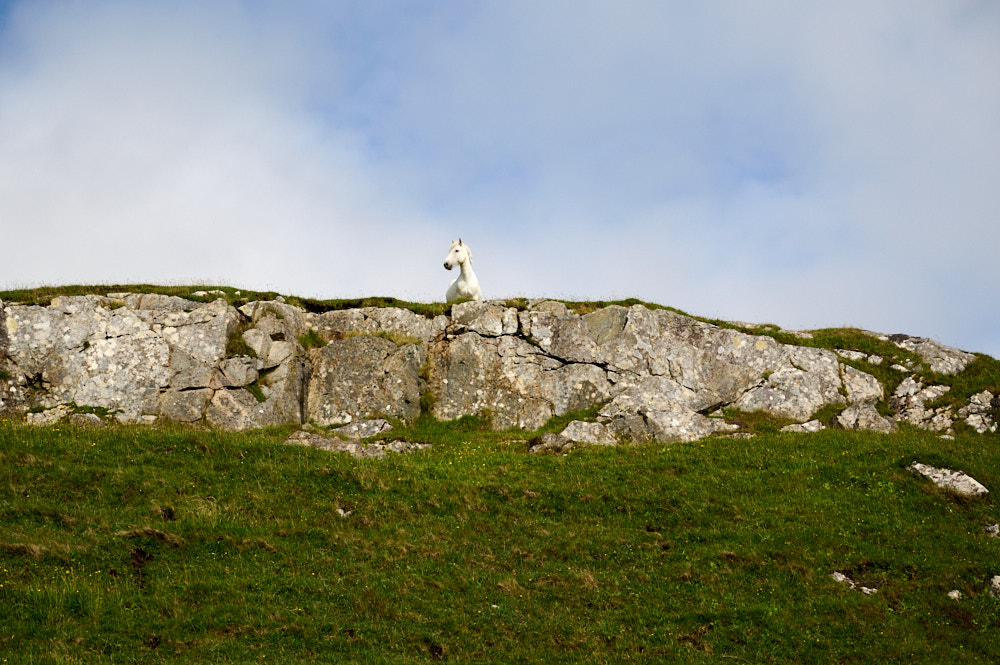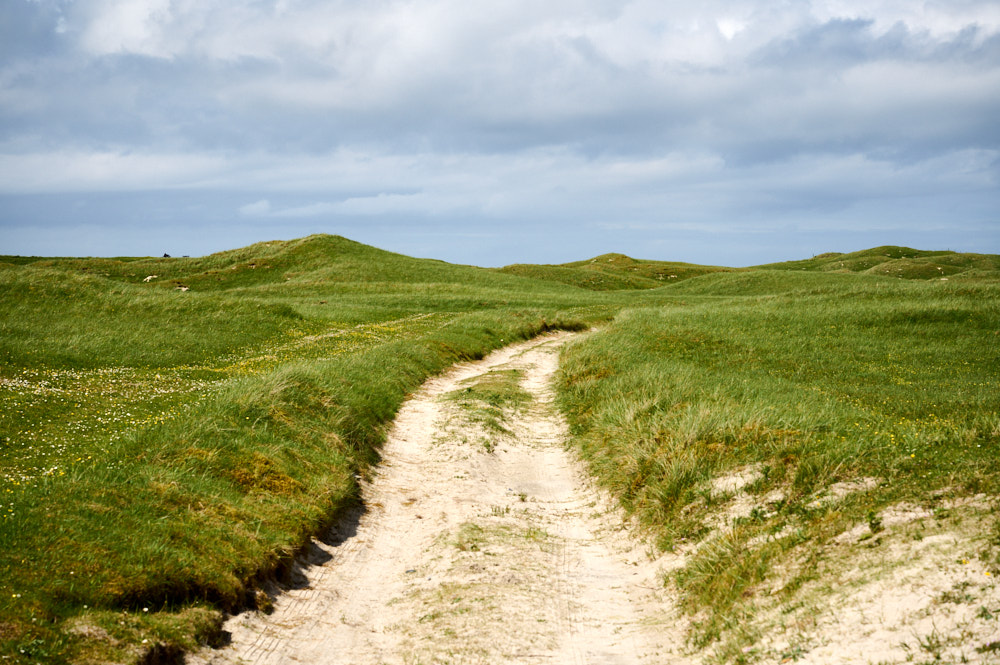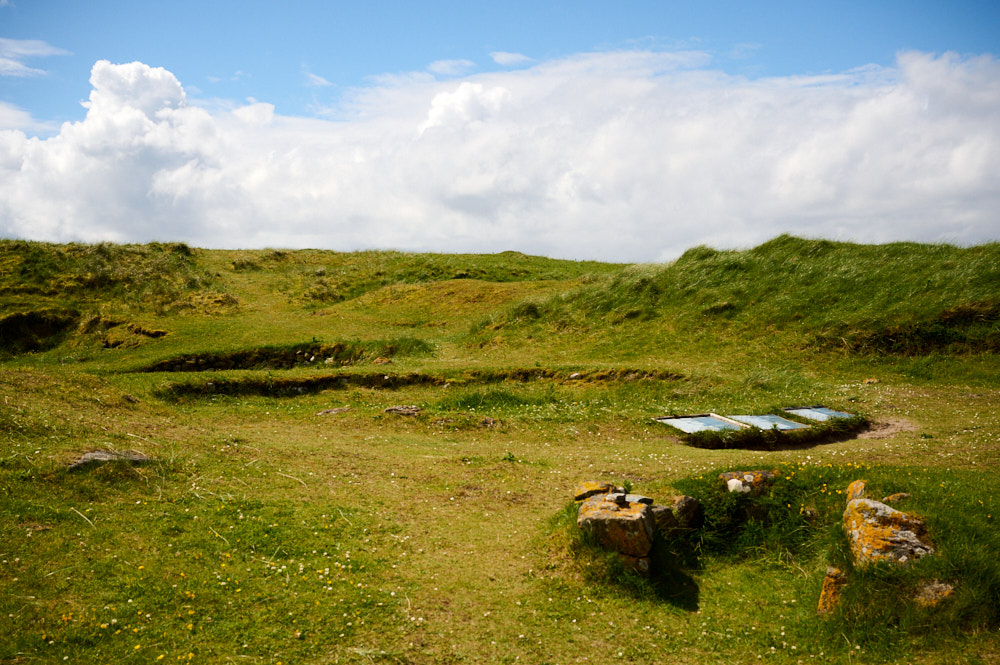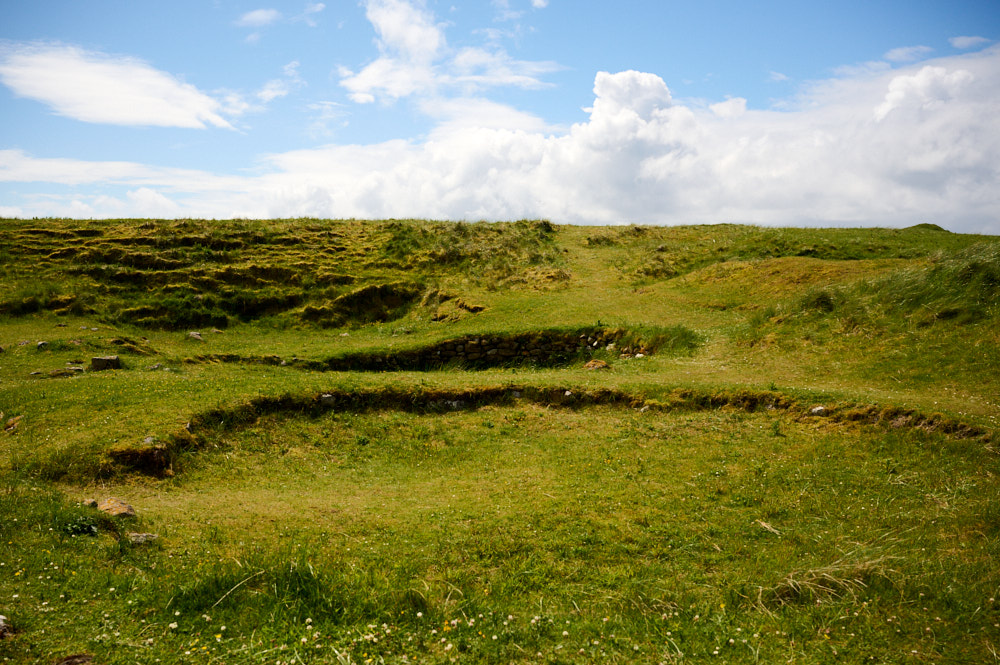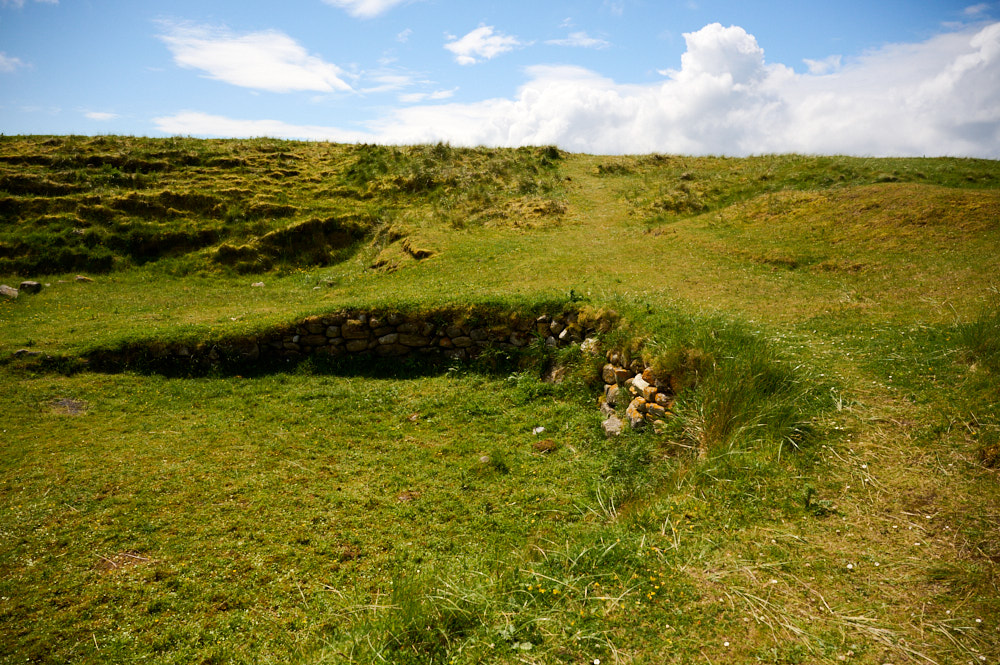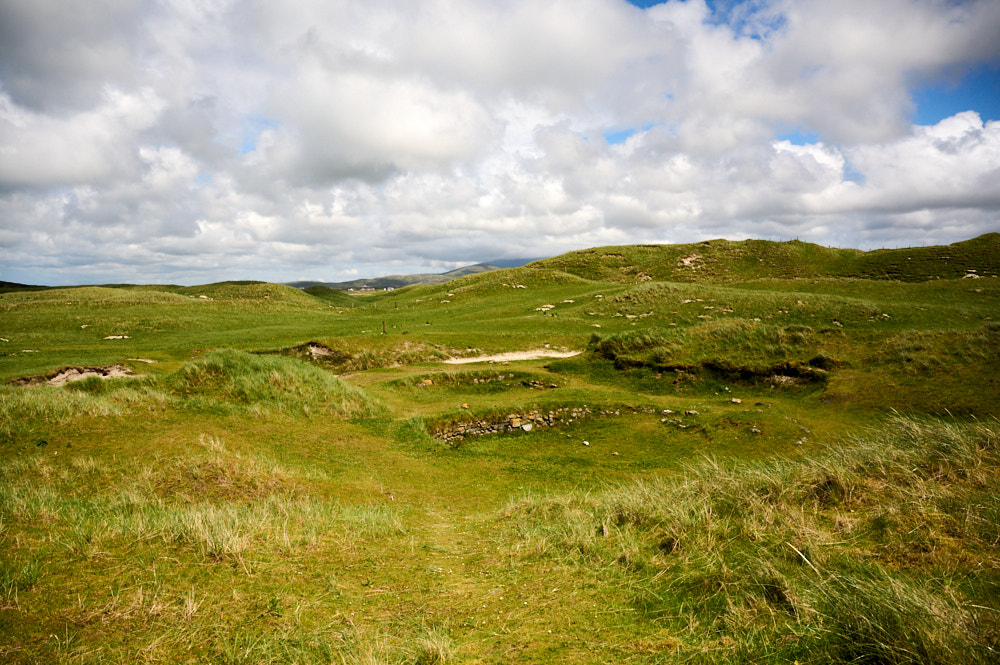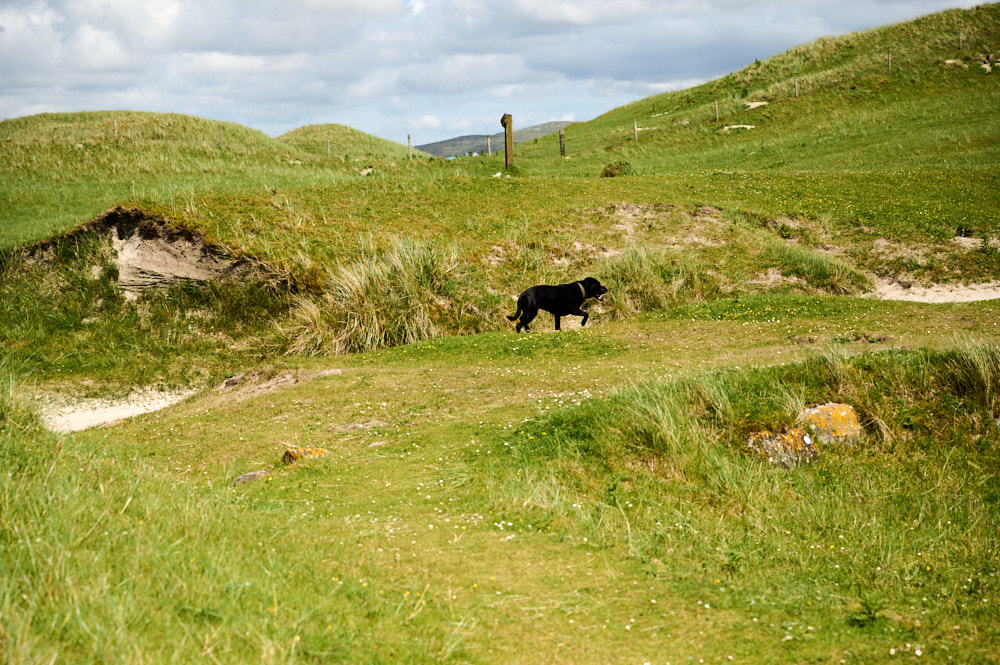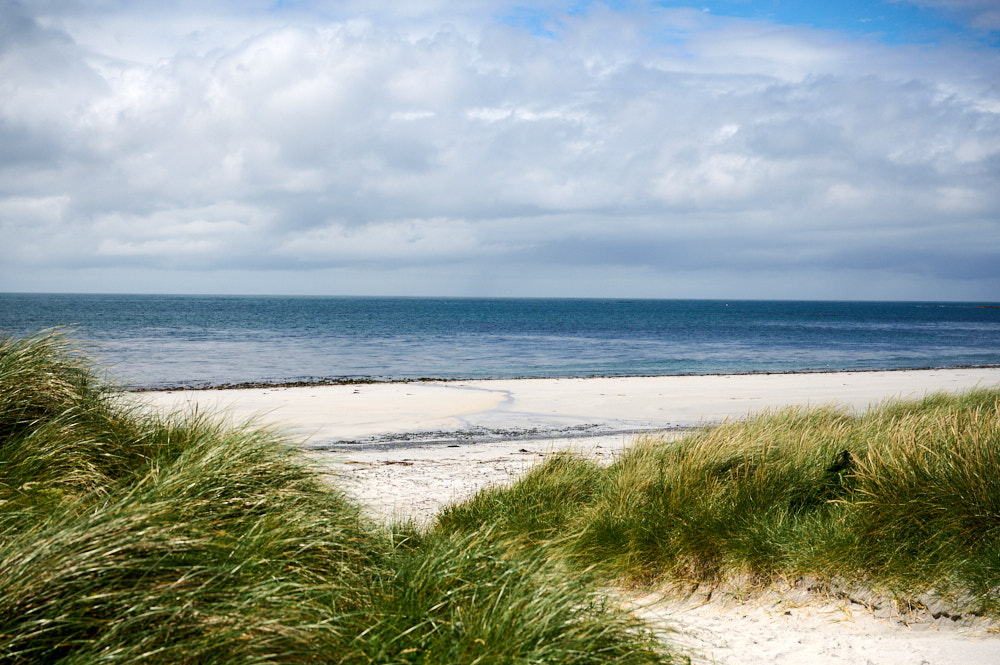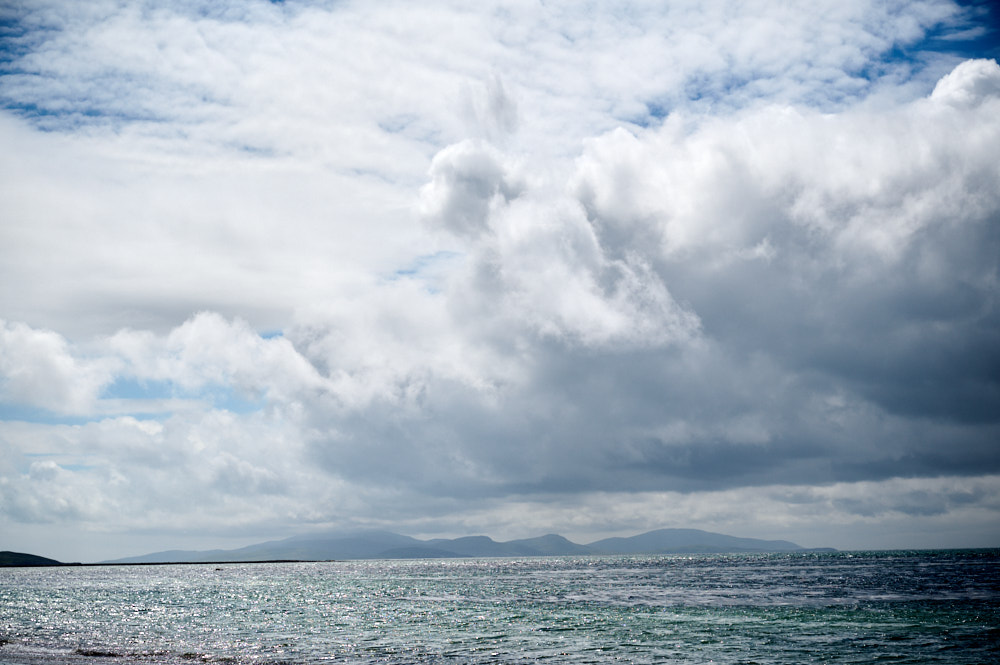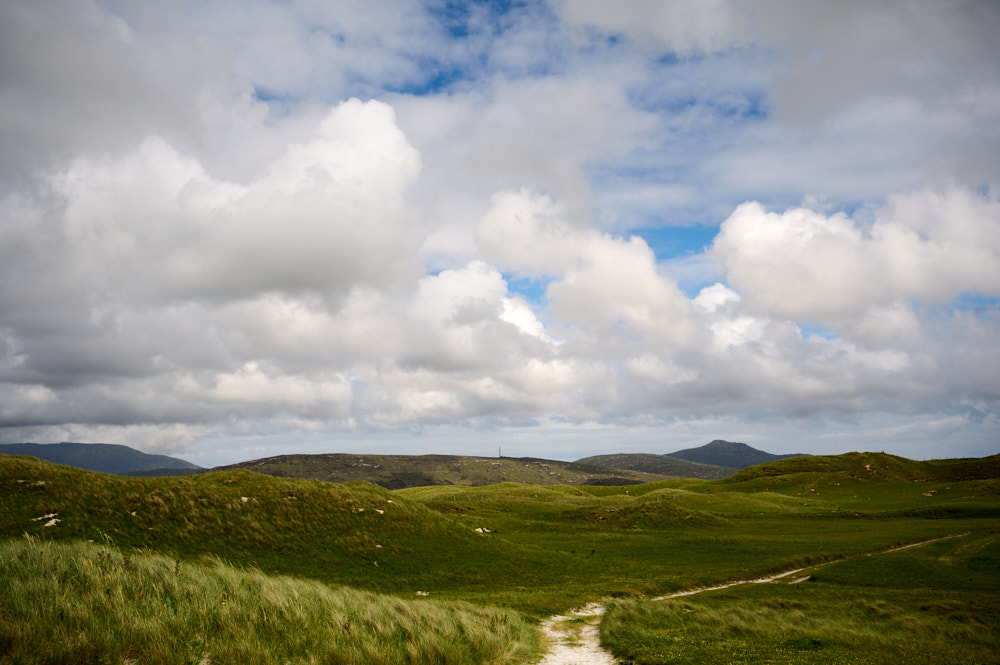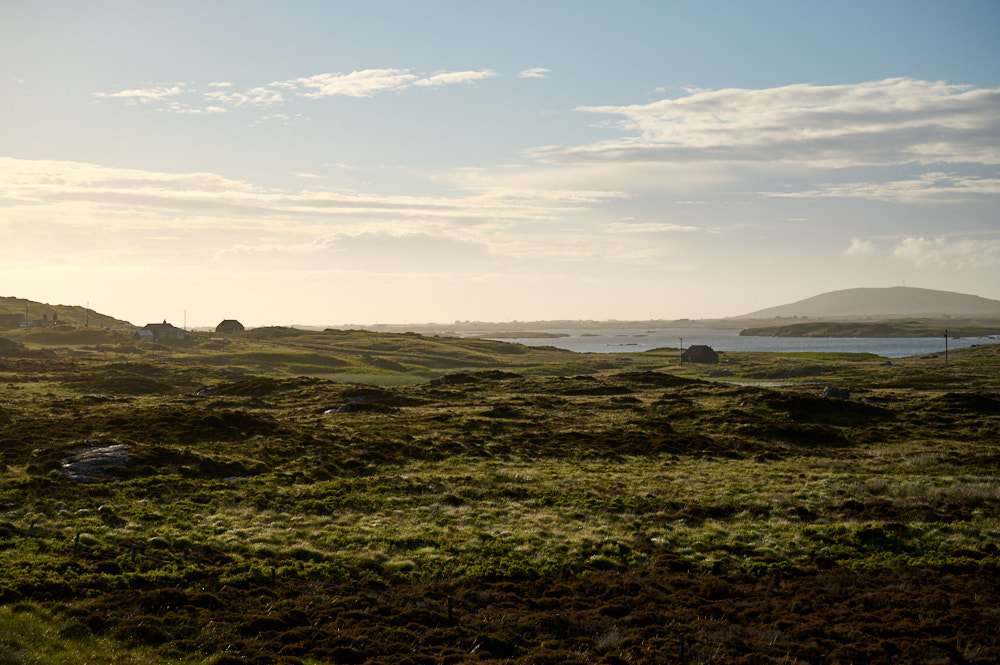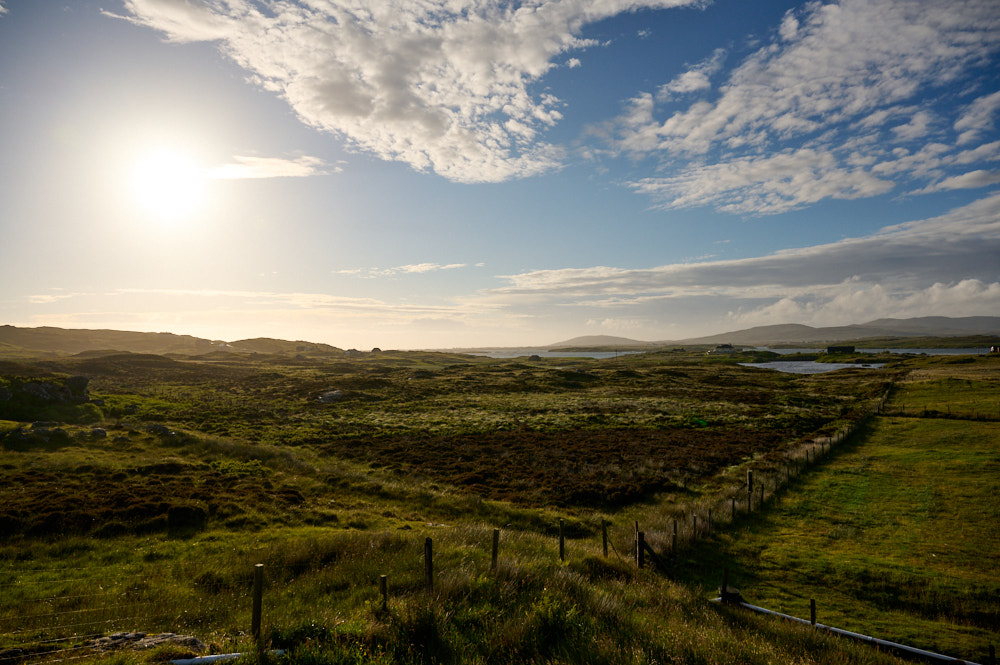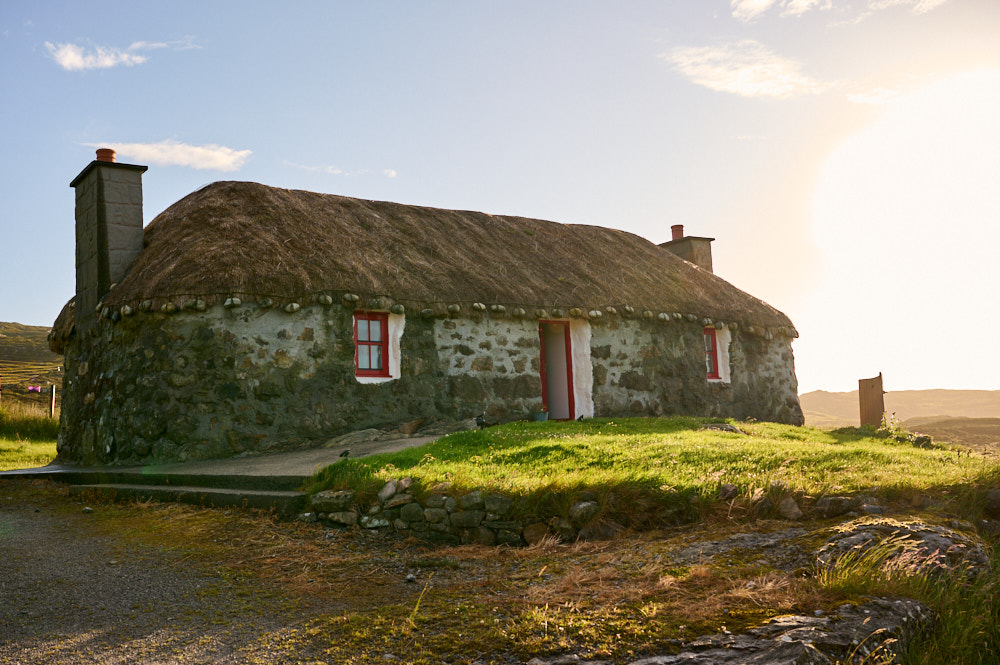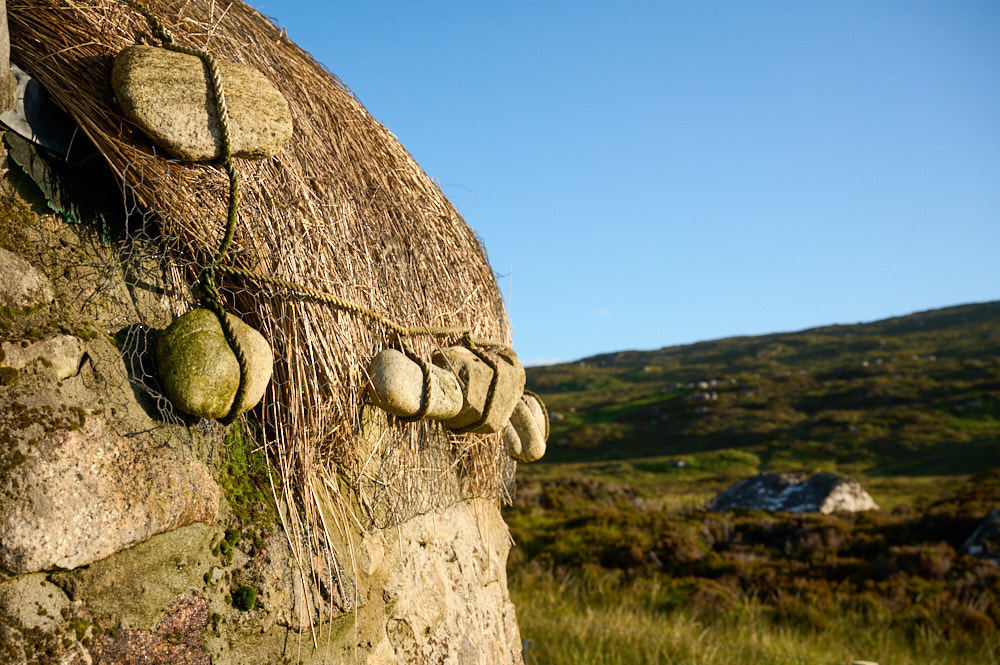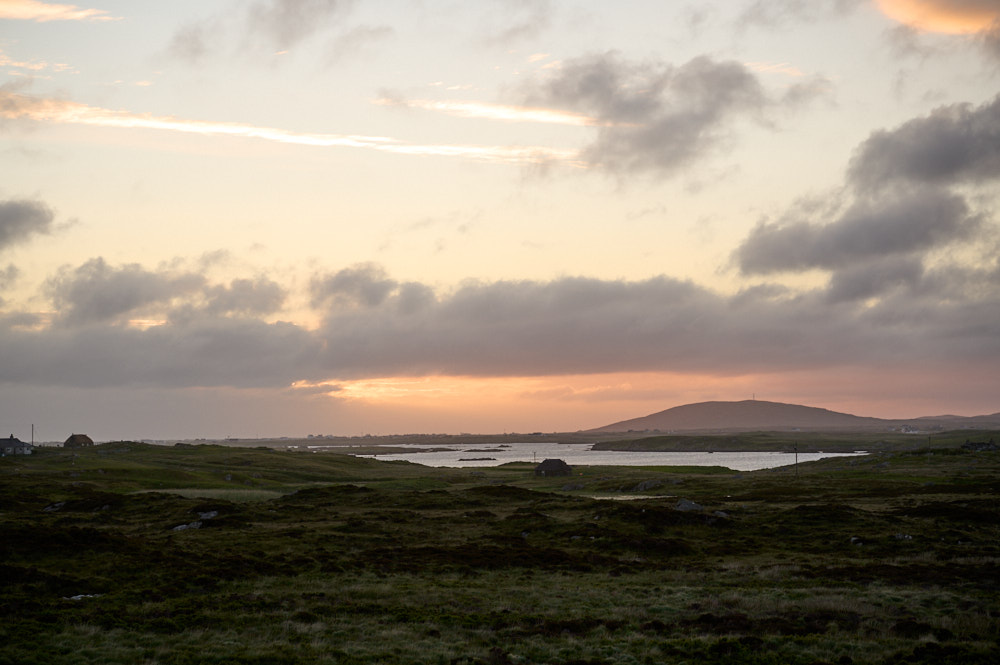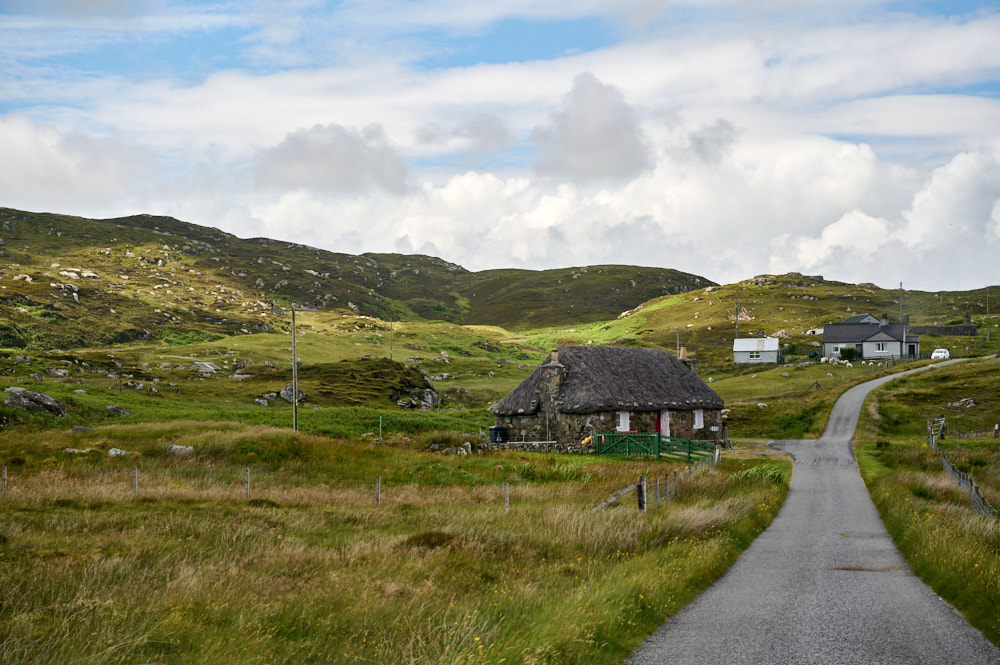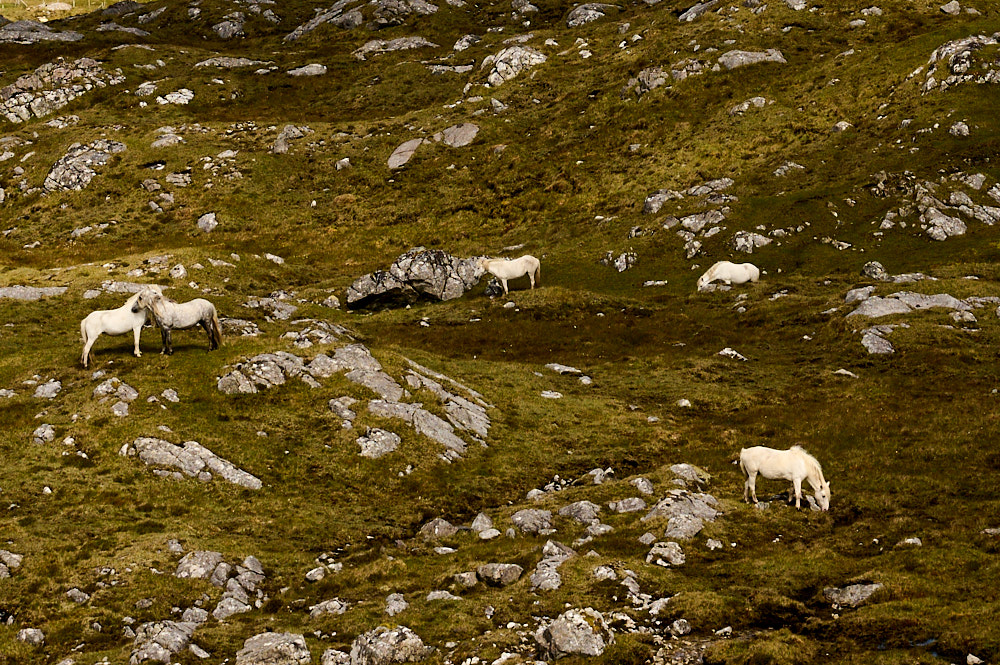
I was in for a special treat – the Eriskay Pony Society offered a guided walk to see the ponies during the “Outer Hebrides Wildlife Festival”.
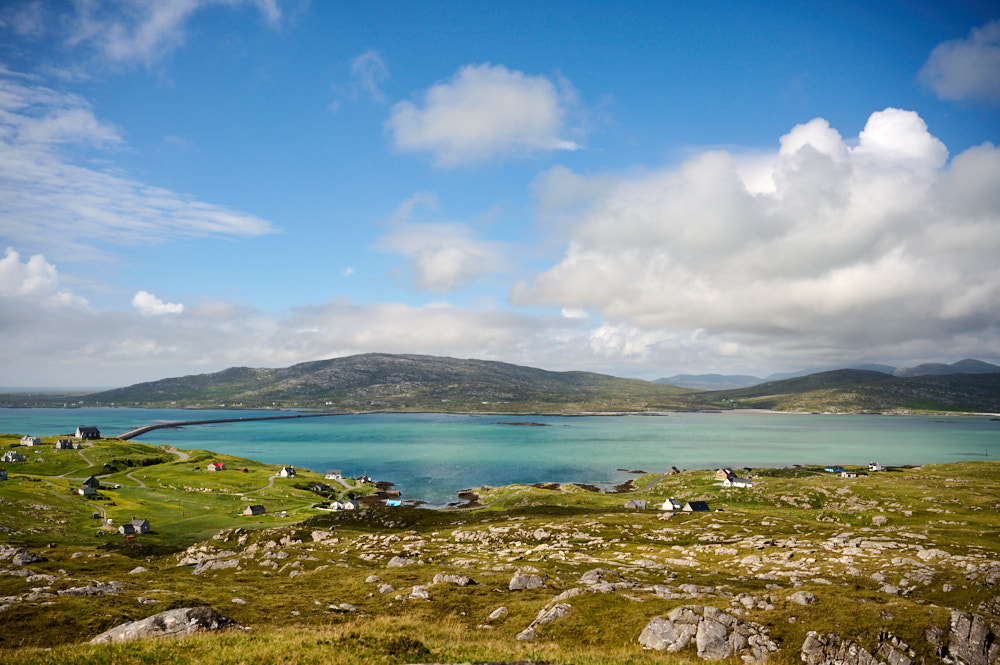
I crossed the causeway from South Uist to Eriskay and met the rest of the group in front of the Eriskay shop and up the hill we went. It was a bit boggy in places but the views were just amazing. And suddenly there they were, the wild ponies of Eriskay.

Our two guides told us about the ponies and how they were used for carrying peat and things. They are also training the young ones so they won´t get too shy.
Until the middle of the 19th Century ponies of the “Western Isles type” were found throughout the islands, where they were used as crofters ponies, undertaking everyday tasks such as bringing home peat and seaweed in basket work creels slung over their backs, pulling carts, harrowing and even taking the children to school.
[…]
However, on the remote island of Eriskay due to difficulties with access and the extra cost implications for sustaining larger animals, other breeds were not introduced, leaving a stock of pure bred ponies which, with increasing mechanisation, had declined to around 20 animals by the early 1970s. (Eriskay Pony Society)

But today there are about 420 ponies, even though not all of them live in Eriskay.
The Eriskay Pony stands 124-138cm (12.0-13.2 hands) high. In winter a dense waterproof coat enables them to live outside in the harshest conditions. The predominant colour is grey with the occasional black or bay and no other colours normally occur. Their legs are fine, with neat feet and only a small tuft of hair at the fetlock. Foals are often born black or bay and usually turn grey as they mature, although a few individuals remain black or bay into adulthood. Eriskay Ponies are immensely strong for their size and are able to carry a light adult with ease. (The Eriskay Pony Society)
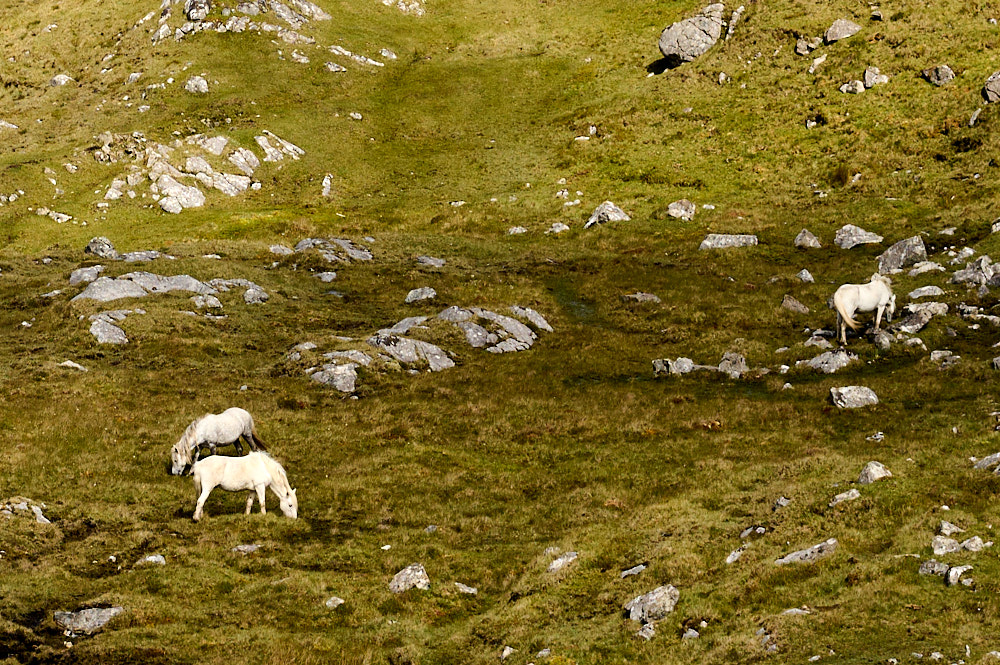


They were training two young ones so we got the opportunity to see them close up.

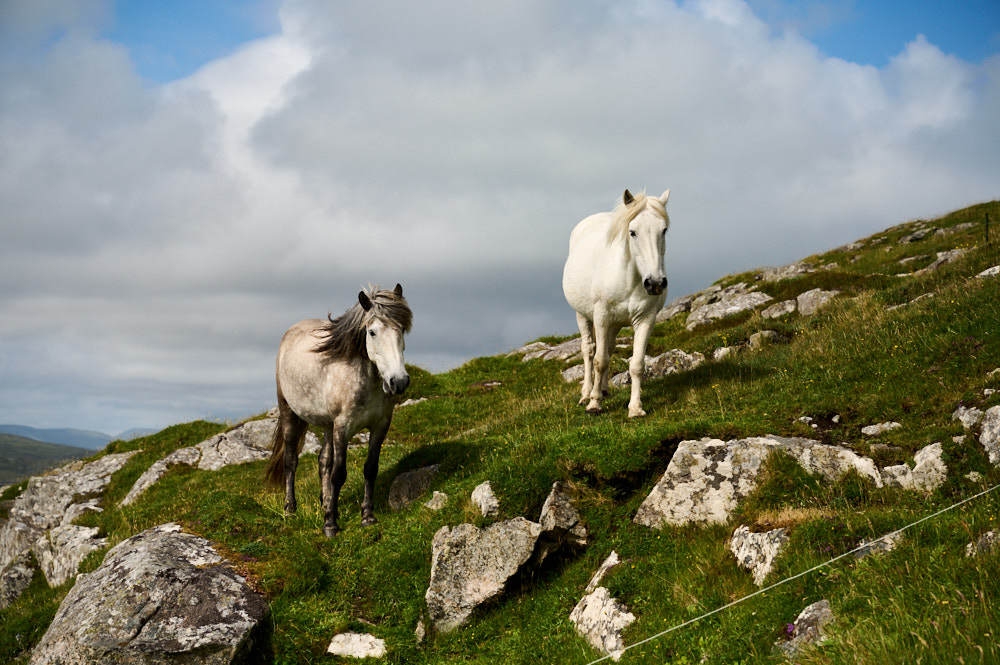
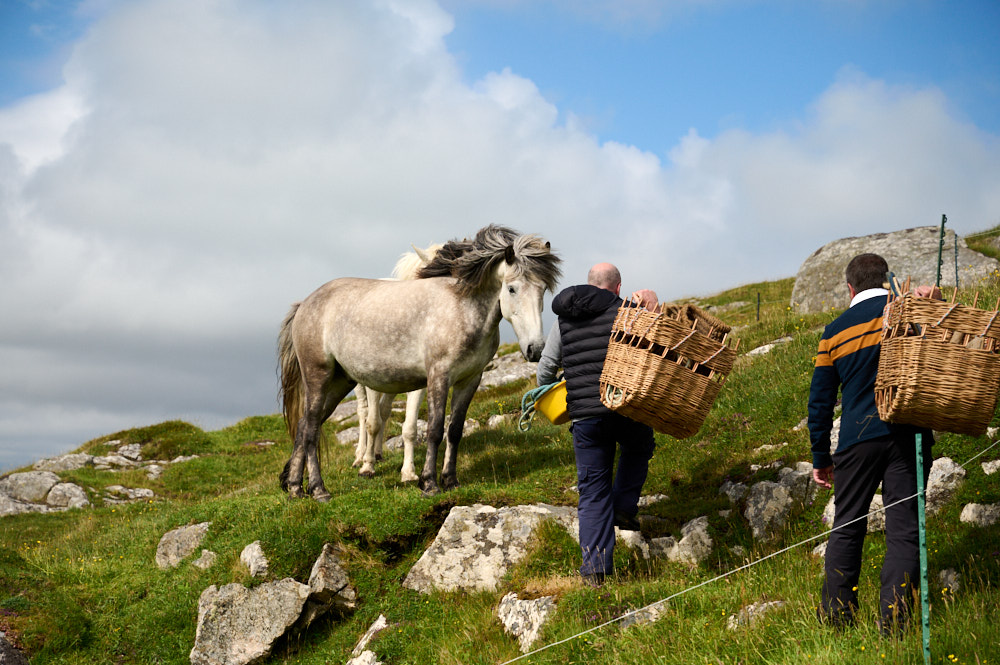
Setting up the baskets to transport peat and other goods. There were also some treats in there…
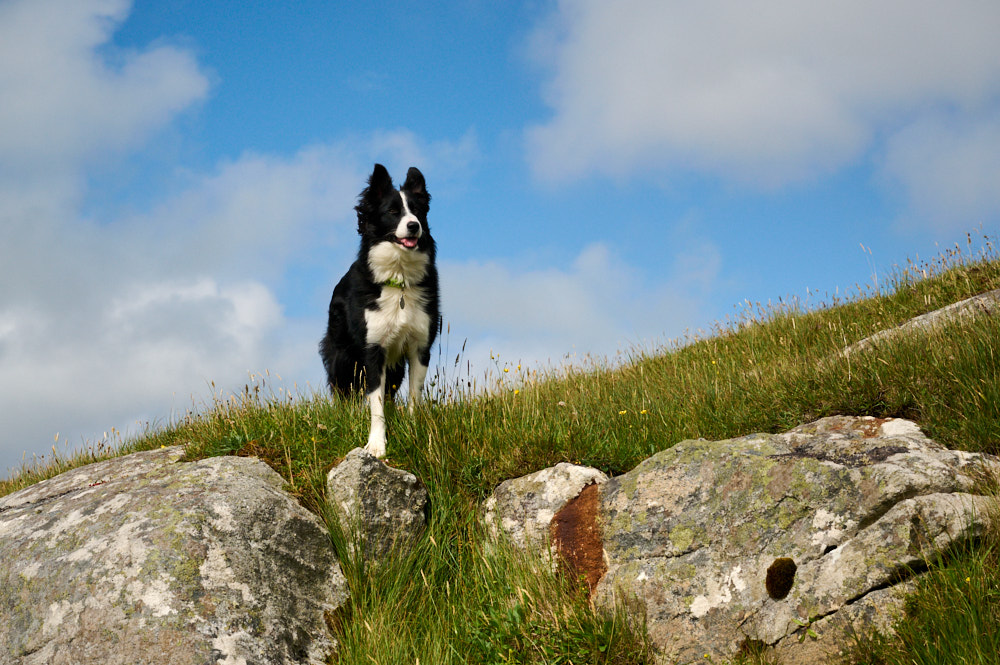

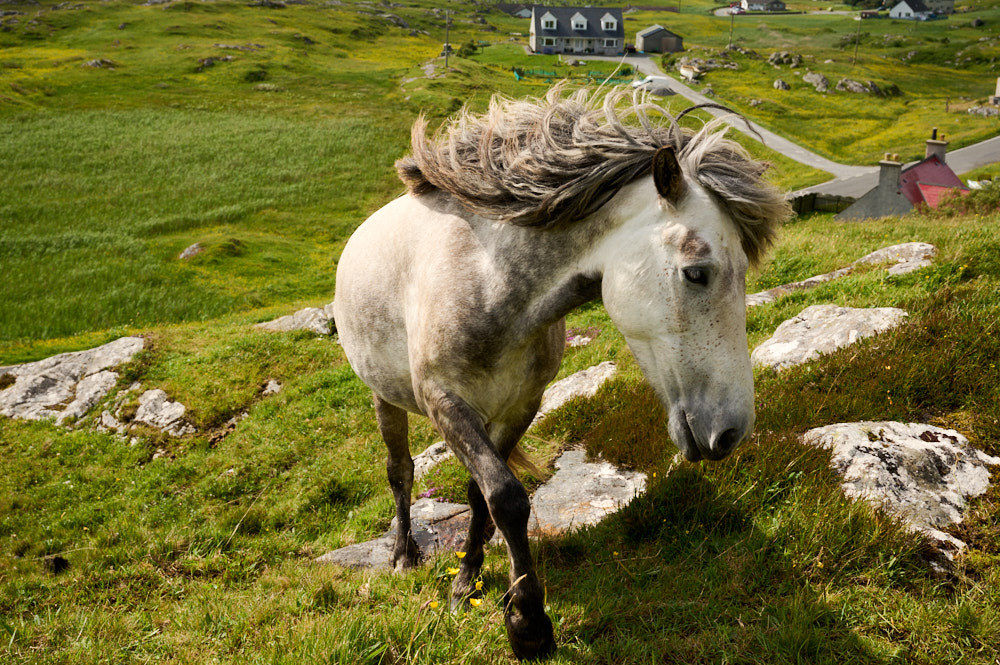
He felt left out and also wanted some treats.
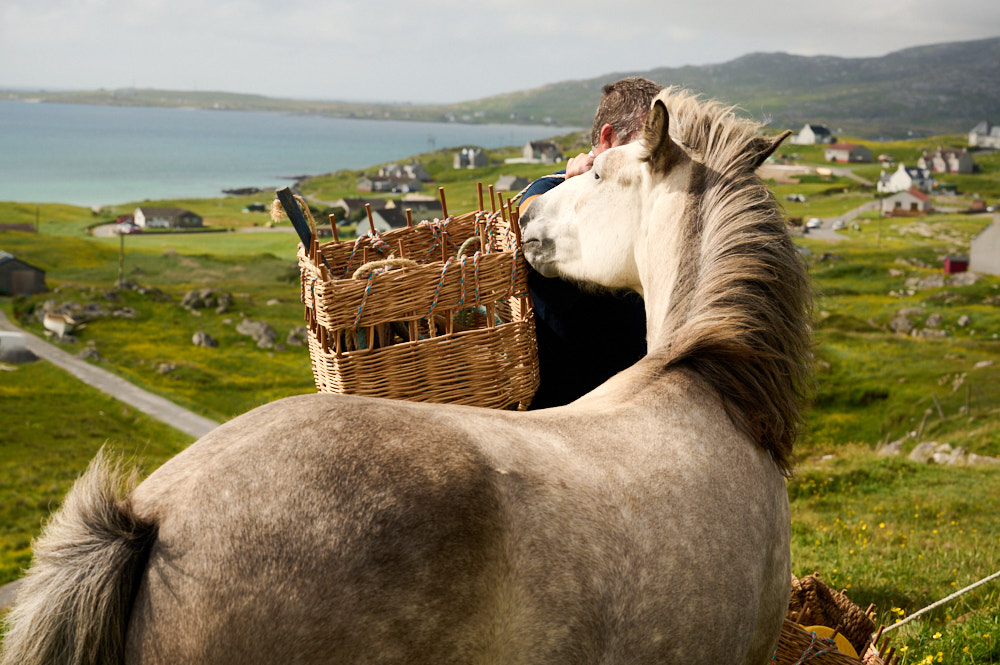
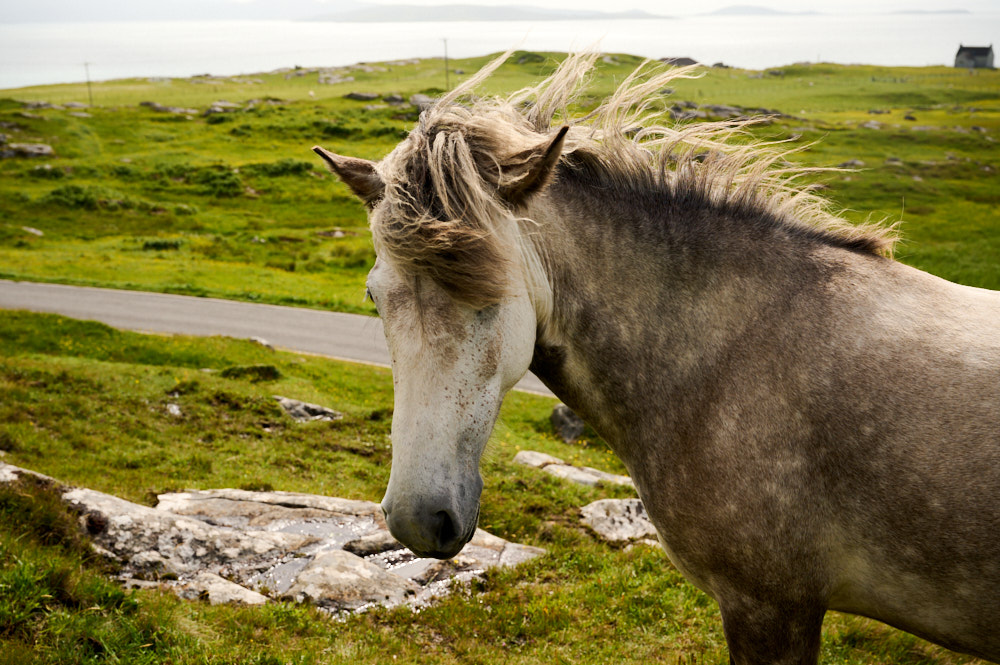
Don´t ever try to feed the ponies (or any other wildlife), they are very used to a certain diet and won´t tolerate other food, even something like an apple might upset their stomach.
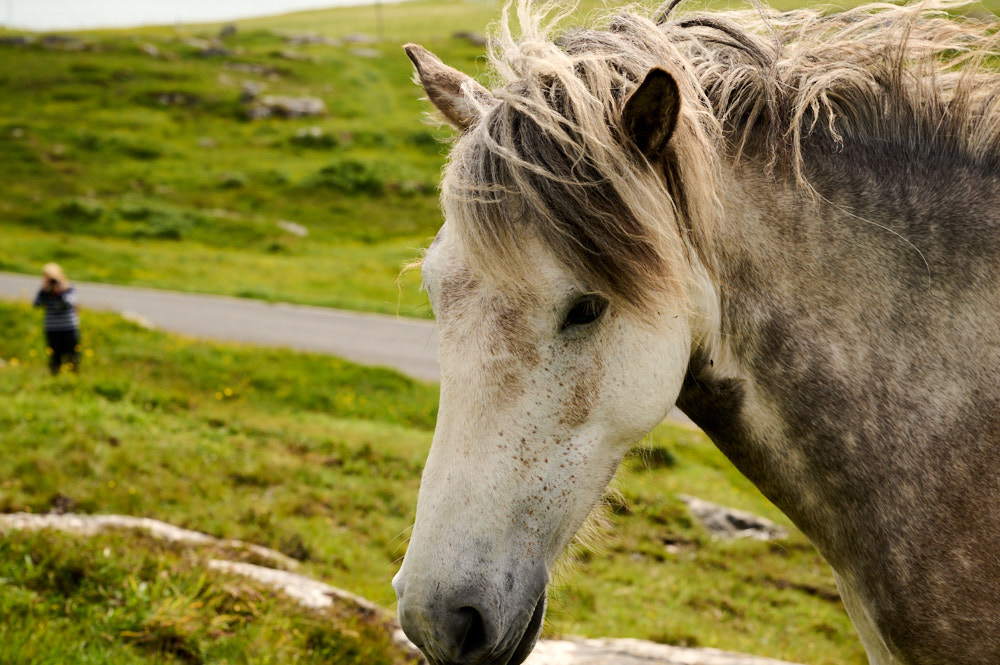
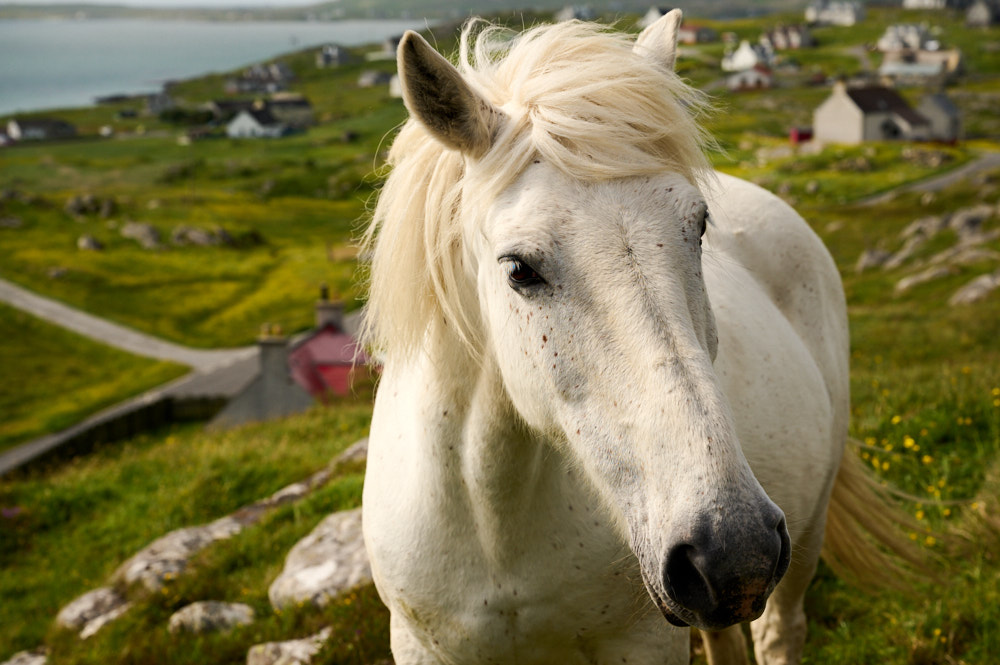
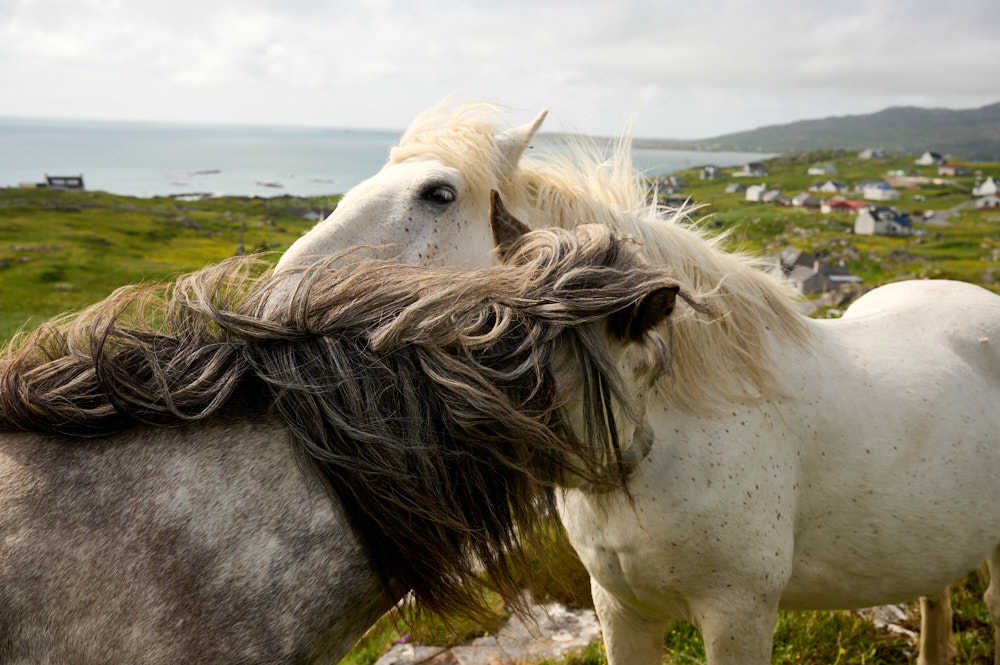

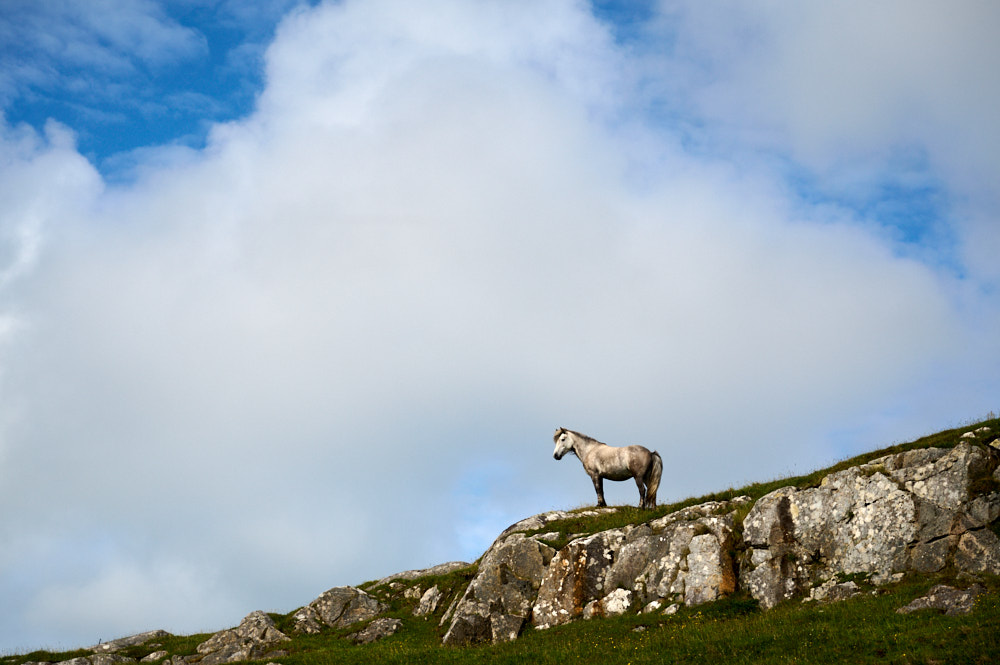
Looking out over Eriskay after we left.
